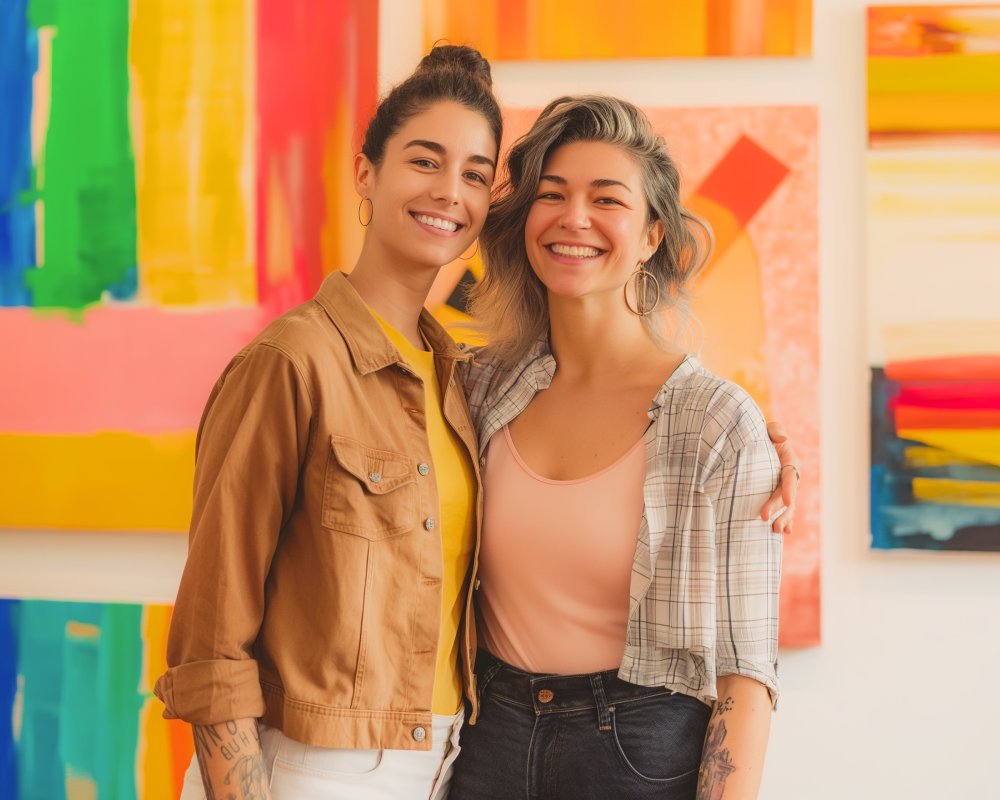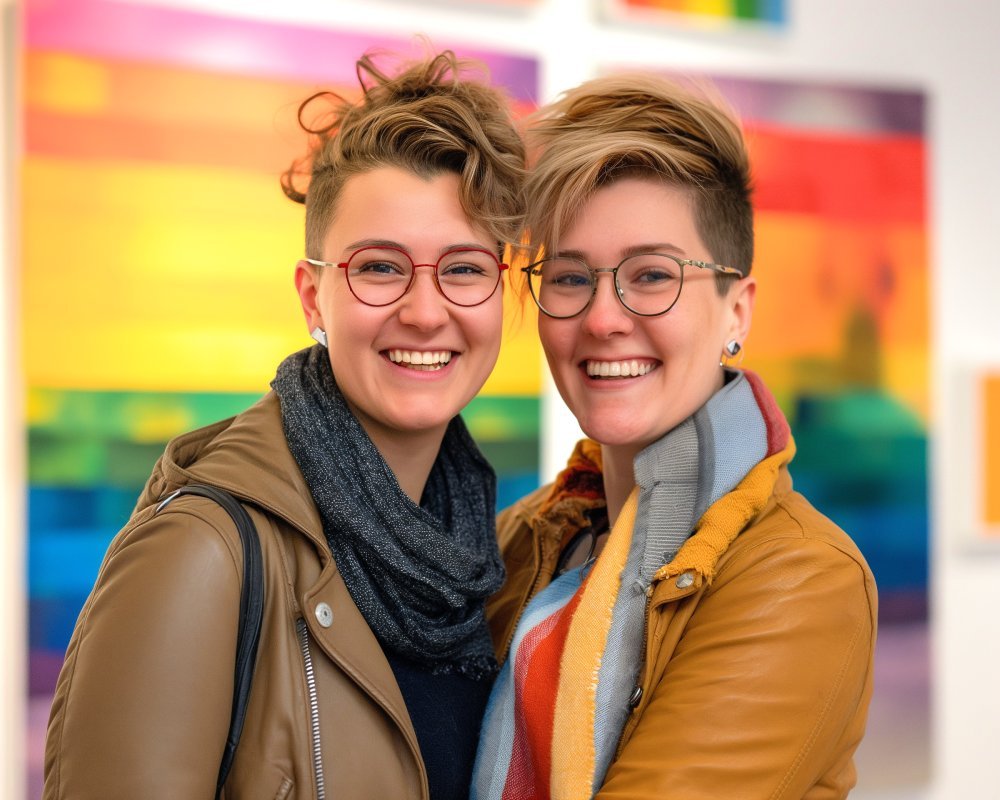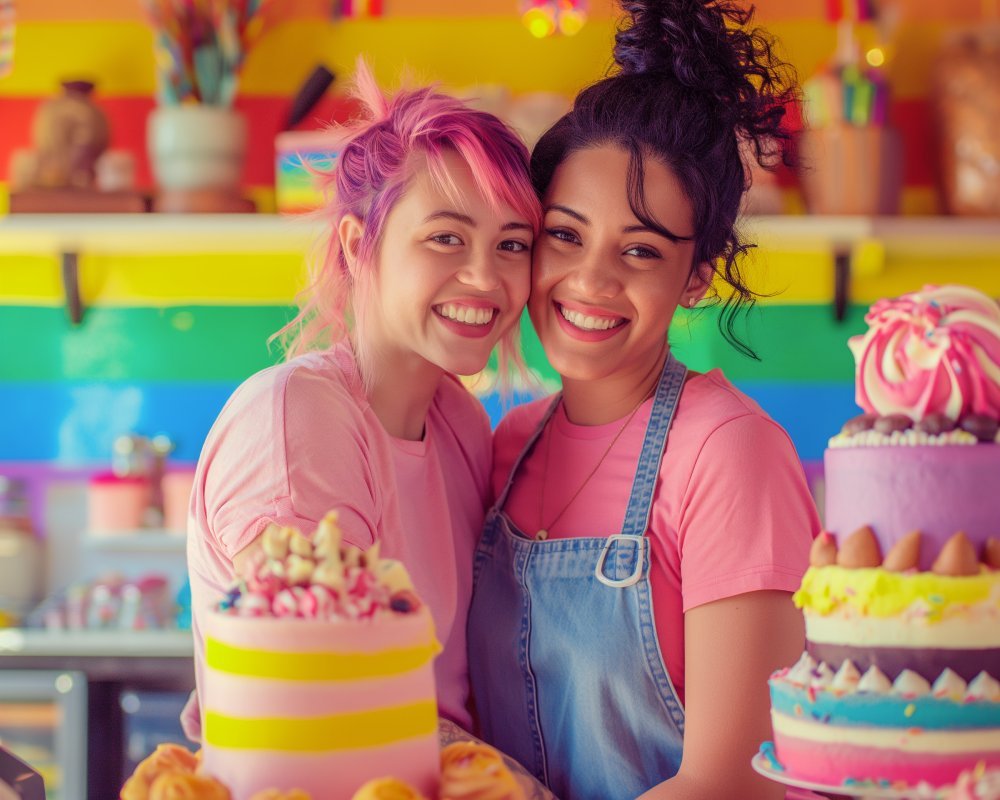
Lesbian Cruising: Do Lesbians Like Cruising?
1. Introduction Lesbian Cruising
In many cultures, the term “cruising” is associated with gay men seeking casual, often anonymous, encounters in specific public or semi-public areas. However, when we talk about lesbian cruising, people tend to pause and wonder: “Is lesbian cruising even a thing?” or “Do lesbians like cruising the same way gay men do?” Discussions around lesbian cruising often pop up in online forums, such as Reddit’s r/AskLGBT, where community members debate whether the practice is widely recognized among lesbians and, if not, why.
This blog post sets out to answer these questions thoroughly. We’ll explore the history behind cruising culture, its intersection with lesbian communities, and whether or not “lesbian cruising” is a recognized phenomenon. We’ll also delve into how lesbians typically meet—whether through bars, apps, events, or travel cruises—and what these social spaces offer. Additionally, we’ll provide insight into Top Lesbian Travel Cruises, compare lesbian spaces to gay male cruising culture, and share the ever-evolving role of lesbian bars, lesbian apps, and online dating.
By the end of this in-depth post, you’ll have a better understanding of whether lesbians like cruising, what “cruising” might look like in a lesbian context, and the broader ways in which lesbian women connect, socialize, and experience community. This blog is intended to be both an informational resource and a conversation starter for the LGBTQ+ community and beyond.

2. Understanding the Concept of “Cruising”
Cruising refers to the practice of looking for casual sexual or romantic encounters in specific public or semi-public environments—such as bars, parks, rest stops, or designated “cruising areas.” Historically, gay cruising was a significant part of gay male culture, especially at times when homosexuality was criminalized or heavily stigmatized. Discreet meeting places allowed men to seek connections with some measure of anonymity.
Over time, the internet and evolving social attitudes have changed the dynamic. Online dating apps, chat rooms, and social media groups have largely superseded traditional cruising spots, but cruising culture persists, particularly within certain gay male subcultures. Some still prefer the spontaneity, anonymity, or communal aspect of cruising.
When people ask, “Is lesbian cruising a thing?”, they’re essentially asking if lesbians engage in the same kind of spontaneous or semi-organized pursuit of partners in public spaces. Because cruising has roots in gay male spaces and because lesbian socialization often works differently, the answer isn’t straightforward.
(Additional note: For those unfamiliar with historical gay cruising, it can also be beneficial to compare and contrast reasons that men sought discreet encounters with whether or not that’s paralleled among women.)
Advertisement · Scroll to continue
Recommended
3. Is Lesbian Cruising a Thing?
3.1 Historical Origins of Cruising
Lesbian and gay male communities have shared histories of oppression, but they haven’t always shared identical social or sexual cultures. Gay men historically frequented bathhouses, piers, public restrooms, or parks for clandestine meetups—often out of necessity, given the laws against homosexuality. Lesbians, facing similar legal and societal pressures, developed different coping mechanisms and social networks. They often connected in private homes, women’s social clubs, or underground speakeasy-style bars.
Additionally, the risk of violence or harassment may have been a deterrent for women to engage in typical “cruising.” In some places, it was far more dangerous for women to be out alone at night or in secluded areas. Consequently, lesbians tended to build more communal, supportive networks that went beyond fleeting sexual encounters, focusing instead on forging stable community spaces (i.e., coffeehouses, music festivals, or “women’s lands”) to foster deeper connections.
3.2 Modern Perceptions of “Cruising”
Today, the term “cruising” conjures images of gay men’s culture rather than lesbian spaces. While there are certainly lesbians who enjoy casual encounters, the concept of roaming public spaces specifically to meet sexual partners is less commonly reported within lesbian communities. Online discussions often reveal that lesbians prefer meeting in social or digital spaces that promote more holistic connections, like dating apps, local bars, or meetup groups.
That said, in some large cities, “lesbian cruising” can exist in the form of flirtation at lesbian or mixed LGBTQ+ bars. With the diminishing number of lesbian-specific bars in many regions, some women frequent local “queer nights” in mainstream clubs or multi-gender LGBTQ+ events if they hope to meet potential partners in person.

4. Why Cruising May Not Be Common Among Lesbians
4.1 Safety and Societal Factors
Societal factors play a significant role in whether lesbians adopt a “cruising” culture. Historically, women have often faced greater risks in public—ranging from sexual harassment to physical violence. The idea of going to a dark park or secluded space might feel particularly unsafe to many lesbian women. There’s also a deeply rooted emphasis on emotional and communal support in many lesbian communities.
Another consideration is the general difference in how society socializes women versus men around sexuality. While none of this is universal, a lingering reality is that women’s expressions of sexuality have often been policed or stigmatized. This, in turn, might reduce the impetus or sense of freedom to engage in open, casual encounters.
4.2 Different Social Norms
The question “Do lesbians like cruising?” can be misleading because lesbians certainly have casual flings, one-night stands, or spontaneous connections. However, the manner of meeting tends to differ from the stereotypical gay male cruising scene. Social norms and expectations can push lesbian-identified women toward spaces where they can talk and connect on multiple levels—be it emotional, intellectual, or sexual.
For instance, the emphasis on conversation, mutual interests, and camaraderie often leads lesbians to prefer events, community gatherings, or digital platforms. That’s not to say lesbians aren’t interested in purely sexual hookups; rather, the approach might be more grounded in bars, parties, or online chats where some initial rapport can be established, as opposed to the immediate, often wordless “pickups” that define many cruising spots.
5. How Do Lesbians Meet?
5.1 Lesbian Bars and Their Significance
Lesbian bars have long been cultural cornerstones for queer women. In decades past, they served as crucial havens—safe environments for socializing away from the watchful (and often judgmental) gaze of mainstream society. Do lesbians like cruising in bars? Sometimes, yes—but in the sense of mingling, dancing, and flirting rather than the traditional stealthy “cruise” we associate with gay men.
- Sense of Community: Lesbian bars provide a solid sense of belonging. Patrons don’t just come to meet potential lovers; they come to find friends and a sense of safety.
- Meeting Potential Partners: Bars often host themed nights or events that encourage patrons to mingle. “Ladies’ Night” or “Queer Women’s Night” can be an invitation to get a bit flirtier, akin to a mild version of cruising.
- Decline in Lesbian Bars: It’s important to note that in many cities, lesbian bars are closing or have closed. This shift has forced many queer women to explore alternative social scenes.

5.2 Lesbian Nightlife & Community Events
Beyond bars, many lesbians opt for community-driven events—like fundraisers, art nights, LGBTQ+ sports leagues, or book clubs. These gatherings often foster deeper conversation and social bonding, which can lead to romantic connections over time. Some community events specifically cater to singles, operating much like speed-dating nights, but with a twist of activism or community-building.
5.3 Lesbian Apps and Online Dating
Digital platforms have revolutionized how lesbians meet:
- Greater Reach: Using lesbian-specific or LGBTQ+-friendly apps like Her, OkCupid, and Lex can open doors to meeting lesbians from various regions.
- Safety & Comfort: Many women prefer the safety net of virtual communication before deciding whether to meet in person.
- Ease of Use: Dating apps streamline the search process. You can often filter by interests, location, and more, making it simpler to find like-minded individuals.

Advertisement · Scroll to continue
Recommended
6. Top Lesbian Travel Cruises
6.1 What Are Lesbian Cruises?
Lesbian travel cruises have gained popularity as an alternative to land-based meetups, bars, and events. These cruises typically cater exclusively or primarily to lesbians or queer women. They offer a blend of vacation and community, allowing participants to explore scenic destinations while socializing with other LGBTQ+ travelers in a safe, celebratory environment.
6.2 Popular Lesbian-Friendly Cruise Lines
Several travel companies specialize in LGBTQ+ vacations, with some focusing specifically on lesbian travelers. Olivia Travel, for instance, is known for offering high-end cruises and resort vacations geared toward women. They feature entertainment such as concerts by well-known lesbian musicians, comedy shows, themed parties, and workshops on relationships or personal development.
Other more mainstream cruise lines, like Holland America or Norwegian, sometimes host LGBTQ+ groups or charters arranged by travel agencies, ensuring a dedicated environment for lesbian and queer women.
6.3 Onboard Activities and Socializing
A lesbian cruise can provide more intimate, targeted opportunities to connect with other queer women—somewhat resembling a modern version of “cruising” but in a very different context. Activities might include:
- Poolside Mixers: Casual meet-and-greets by the pool.
- Dating Games: Playful events designed to spark connections.
- Workshops & Discussions: Panels on relationship advice, queer history, or sexuality.
- Excursions: Shore activities arranged so you and your new friends or romantic interests can explore new locations safely.
Because these cruise environments are structured, they give lesbian women the chance to meet organically within a like-minded community, forging bonds that can last far beyond the final docking.
7. Lesbian Cruising vs. Gay Male Cruising: A Comparison
7.1 Different Spaces, Different Norms
Gay men historically needed cruising spots because of hostile legal and cultural climates. Public cruising offered a discreet way to meet potential partners. For lesbians, homophobic oppression was equally real, but the formation of more insular communities—perhaps tied in part to the different socialization of women—altered how they connected. Modern apps and inclusive venues also shape these differences today.

7.2 Social Etiquette and Cultural Influences
When discussing “Do lesbians like cruising?”, it’s vital to note that the concept of cruising often involves very direct sexual signaling. While women can also appreciate spontaneous encounters, cultural norms tend to encourage a relational or emotional foundation. That doesn’t mean it’s universal—plenty of lesbians enjoy no-strings-attached hookups. However, the method of meeting (like striking up a conversation in a bar or an app) is more common than the direct, unspoken physical cues often associated with gay male cruising spots.

8. Lesbian Bars: A Changing Landscape
8.1 Challenges Facing Lesbian Bars
Lesbian bars across the U.S. (and in many parts of the world) have experienced a rapid decline. Sociological studies cite multiple reasons:
- Gentrification & Rising Rents: Running a specialized bar is expensive, especially in major cities where rent has soared.
- Shift to Online: Younger generations rely more on apps and social media for dating and socializing, reducing bar foot traffic.
- Changing Identities: The concept of “lesbian” has become more fluid for some, with a larger number of people identifying as queer or pansexual. Bars that brand themselves exclusively as “lesbian” may experience a narrower clientele base in some regions.
8.2 The Importance of Retaining Lesbian-Specific Spaces
Even with these shifts, many advocate fiercely for preserving lesbian bars. These spaces offer:
- A Sense of History: Lesbian bars carry legacies of activism, community care, and cultural resistance.
- Physical Visibility: Online spaces, while significant, can’t entirely replace the feeling of tangibly existing in a real-life, physical venue as a queer woman among other queer women.
- Support Networks: Bars can double as supportive networks, hosting fundraisers, educational programs, and safe havens for those exploring their identity.
9. Lesbian Apps and Online Dating
9.1 The Rise of Digital Platforms
Apps like Her, OkCupid, Lesly, Scissr, and even mainstream apps like Tinder with orientation filters have revolutionized how queer women connect. Instead of searching for specific venues or hoping to stumble upon another lesbian in everyday life, technology places your prospective dating pool at your fingertips.
9.2 Popular Dating Apps for Lesbians
- Her: A pioneering app focused squarely on lesbian, bisexual, and queer women. It also offers social networking features, event listings, and chat forums.
- Lex: Text-based, personal-ad style postings that many find more authentic or community-driven.
- OKCupid: Known for its inclusive approach to sexual orientation and gender identity, as well as in-depth profiles.
- Tinder: Mainstream but includes orientation settings for lesbian, bisexual, and queer women. Because of its ubiquity, it can be a convenient option in areas with fewer dedicated lesbian spaces.
9.3 Online Etiquette and Safety
When engaging online, always consider safety:
- Verification: Look for users who have linked social media accounts or verified profiles to reduce catfishing.
- Meet in Public: First dates are generally safer in well-lit, populated public places.
- Trusted Contacts: Let a friend know where you’re going and with whom.
While online dating can’t fully replicate the spontaneity of real-life “cruising,” it does provide a safer, more controlled environment for many lesbians seeking meaningful or casual connections.

10. Similar & Related Keywords and Topics
Expanding our exploration, here are some additional keywords and nuances that further enrich the conversation around “Lesbian Cruising” and social/romantic connections among queer women:
- “Lesbian Nightlife”
- Encompasses bars, clubs, lounges, and special event nights aimed at queer women.
- Reflects local culture, music preferences, and community activism.
- “Lesbian Hookup Culture”
- Highlights casual connections, one-night stands, and no-strings encounters.
- Shows that while it may not exactly mirror gay male cruising, casual sexual exploration does exist within lesbian circles.
- “Lesbian Meetups”
- Focused on community building, often hosted via platforms like Meetup.com.
- These events can range from hiking groups, game nights, to professional networking.
- “LGBTQ+ Community Resources”
- Includes local LGBTQ+ centers, nonprofits, support groups, or health clinics.
- Offers safe spaces for identity exploration and meeting potential friends or partners.
- “Lesbian Speed Dating”
- Organized events where lesbian or queer women rotate through quick “dates” to see if there’s a spark.
- A middle ground between the anonymity of cruising and the in-depth interactions of a lengthy in-person meet-up.
- “Queer Women’s Festivals”
- For instance, certain music festivals or pride events geared specifically toward women, or at least featuring women’s spaces.
- Great places to make connections, both platonic and romantic, that may evolve over a weekend of shared experiences.
Adding these themes to your search can help you discover local or online communities, ensuring you don’t miss out on lesser-known ways lesbians and queer women connect socially and romantically.
11. Conclusion – Lesbian Cruising
So, is lesbian cruising a thing? The short answer is not in the same way it is for gay men. While some might casually use the term “cruising” to describe flirtatious bar behavior or hooking up with strangers, there isn’t a deeply rooted public cruising culture comparable to that historically found in gay male communities. Various factors—such as societal expectations, safety considerations, the emphasis on more communal forms of socializing, and the historic necessity for safer gathering spaces—have shaped a different trajectory for lesbians.
Yet, lesbians do indeed meet for casual encounters, form deeper relationships, and build strong networks—just by somewhat different methods. Lesbian bars, LGBTQ+ events, dating apps, and travel cruises offer varied avenues for connection. Meanwhile, smaller grassroots efforts, online message boards, and specialized events provide additional social lifelines. As the world evolves, we see an ongoing transition from physical bar culture to digital platforms, with new, creative forms of in-person events continuing to pop up.
Ultimately, if your question is “Do lesbians like cruising?”, you might better ask: “Where do lesbians like to connect, flirt, hook up, and build community?” The answer to that is multifaceted, but it’s clear that lesbians, like all people, value spaces—both online and offline—where they feel safe, recognized, and free to explore romantic or sexual possibilities. Whether that environment is a cozy bar with close friends, a bustling Pride weekend event, a specialized lesbian cruise, or a straightforward dating app, the common thread is a desire for genuine connection.
While “traditional cruising” may not be a hallmark of lesbian culture, lesbian cruising can still be understood as the pursuit of connection—just shaped by its own unique history, community norms, and evolving social landscapes. We hope this overview clarifies not only the question of “lesbian cruising” but also the many ways that lesbians meet, mingle, fall in love, or have casual flings—proving that there’s no single right way to find romance, friendship, or fun in the vibrant world of LGBTQ+ communities.
Advertisement · Scroll to continue

More Recommended
Explaining the Difference Between Cross-Dressers and Transgenders
Explaining the Difference Between Cross-Dressers and Transgenders In today’s world, where conversations about gender identity [...]
Is “Homie” a Hidden Term for Being Gay?
Is “Homie” a Hidden Term for Being Gay? A Long, Informative Exploration of Covert Intimacy [...]
How to Support Gay Rights Through Advocacy and Action
How to Support Gay Rights Through Advocacy and Action – Supporting gay rights through advocacy [...]
Inclusivity in Marketing: The Rise of Lesbian-Owned Businesses
Inclusivity in Marketing: The Rise of Lesbian-Owned Businesses As the LGBTQ+ community continues to make [...]
Benefits of Advertising to Queer Audiences?
Benefits of Advertising to Queer Audiences? In today’s increasingly diverse and inclusive world, advertising to [...]
Best LGBTQ+ Food Festivals for Travelers
Best LGBTQ+ Food Festivals for Travelers – When it comes to blending culture, food, and [...]
How to Bottom for the First Time?
How to Bottom for the First Time? A Complete Guide for Beginners For many gay [...]
How Local Gay-Owned Businesses Can Use SEO to Attract Customers
How Local Gay-Owned Businesses Can Use SEO to Attract Customers – Local gay-owned businesses play [...]
200 LGBTQ Quotes to Share During Pride Month
200 LGBTQ Quotes to Share During Pride Month Pride Month serves as an important time [...]